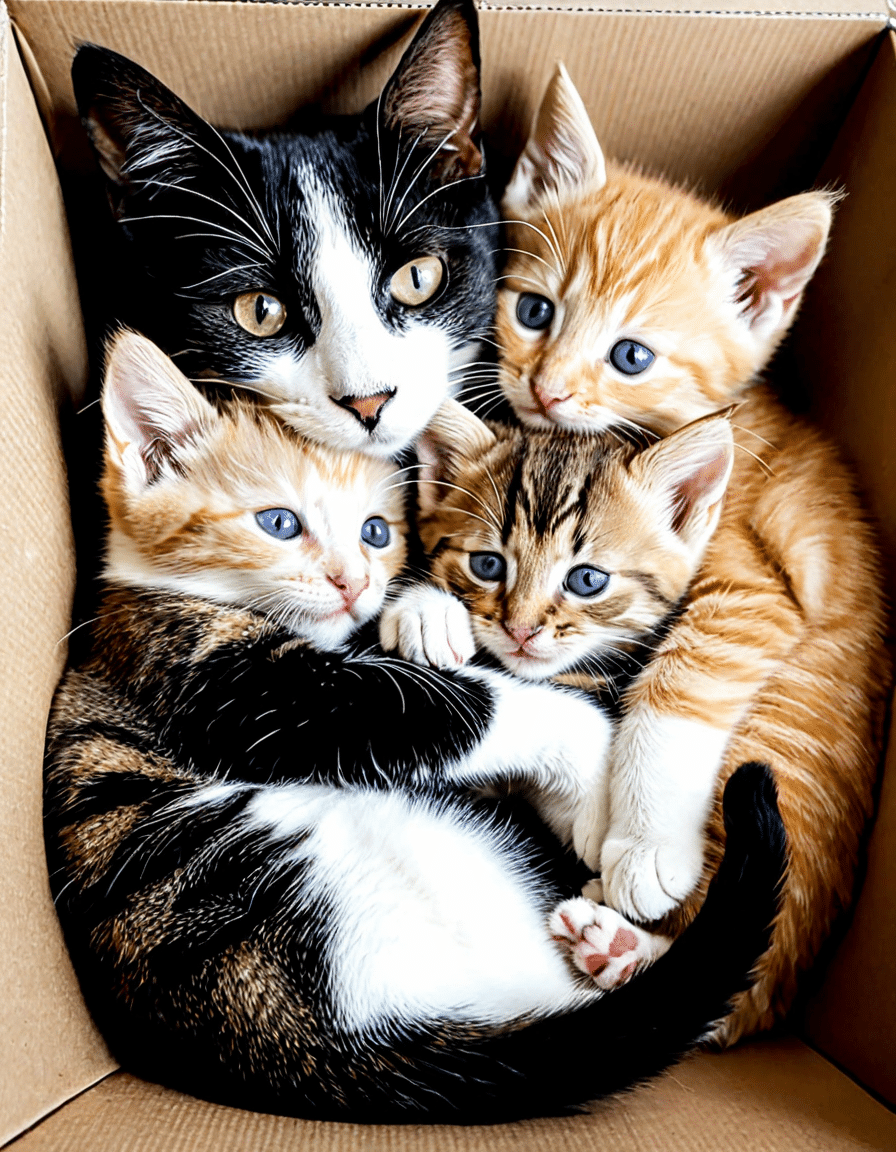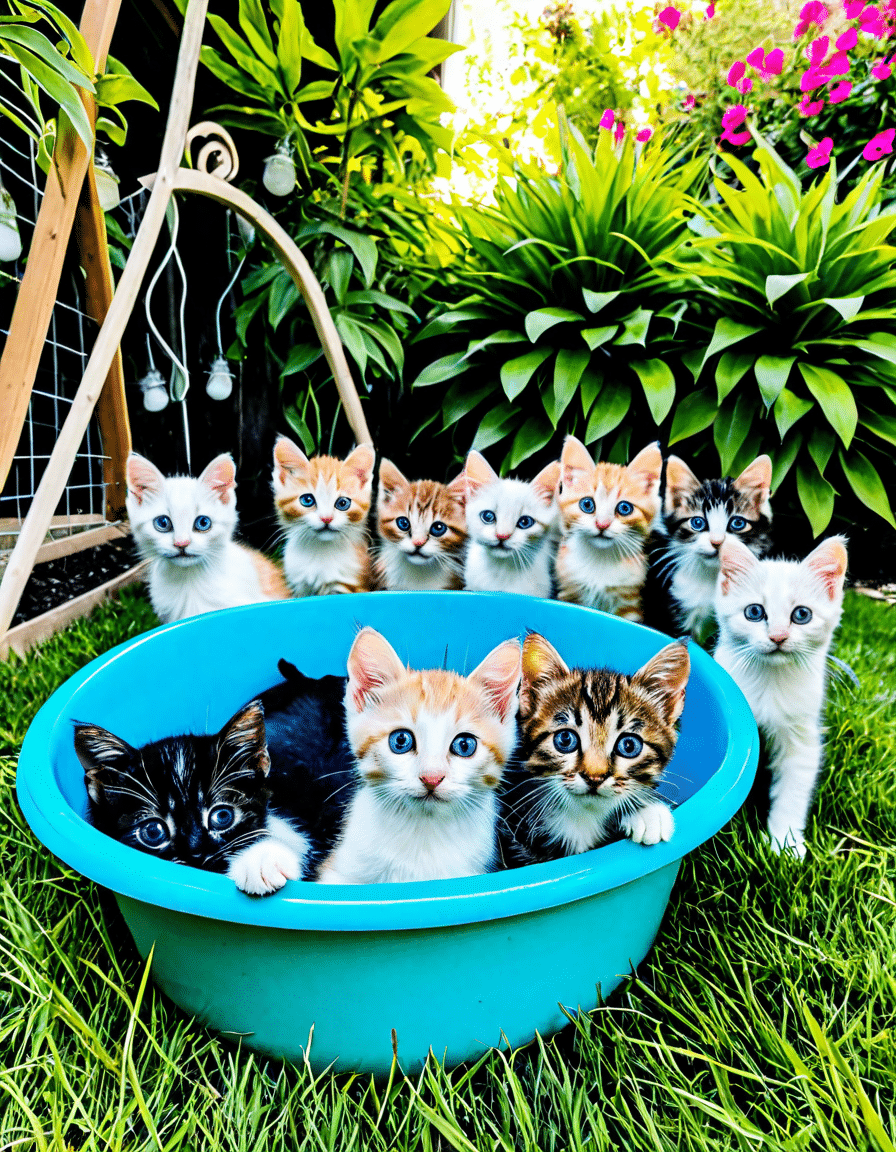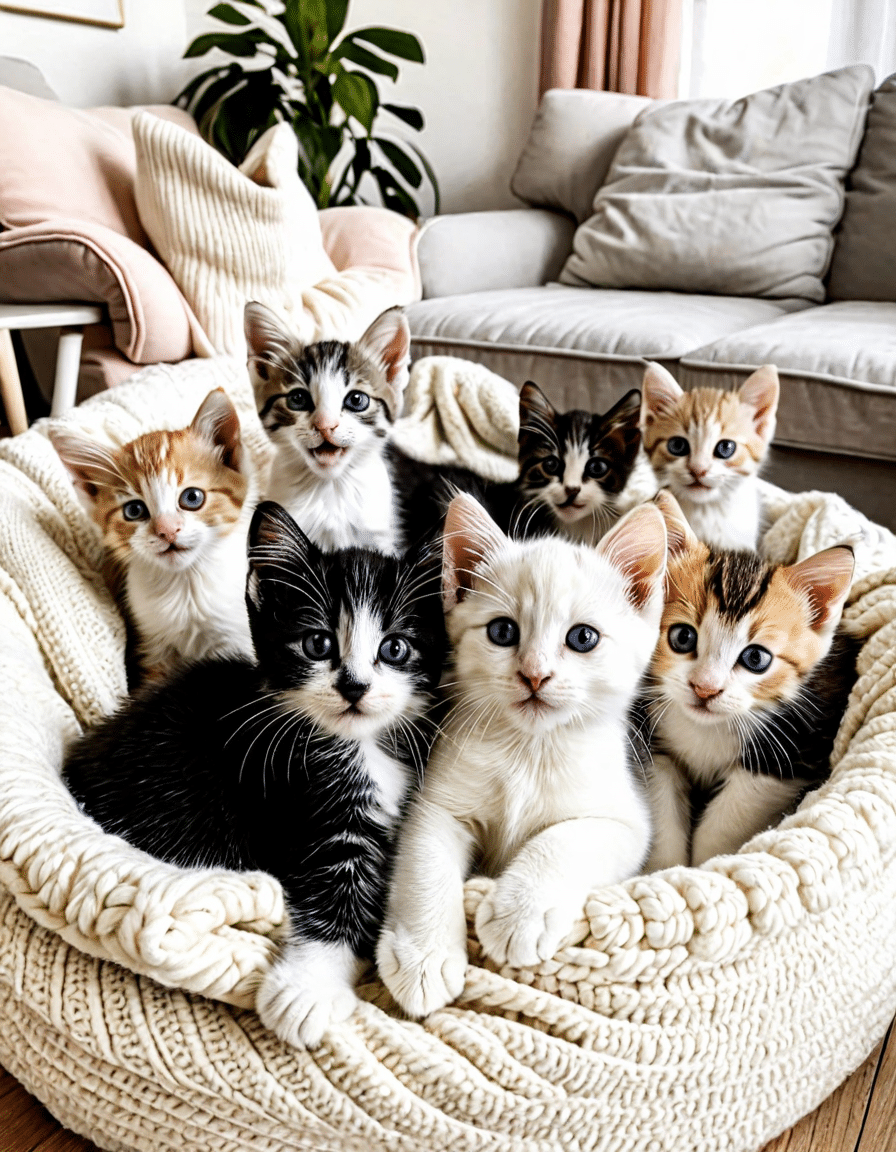When it comes to figuring out how many cats are in a litter, there’s a range of curiosity among cat owners and enthusiasts alike. The average litter size for domestic cats typically ranges from 1 to 12 kittens, with 4 to 6 being most common. However, multiple influences can affect this number, such as the breed of the mother, her age, health, and the season she gives birth. Let’s dig deeper into these aspects to better understand the wonderful world of feline reproduction!
The Average Litter Size: How Many Kittens Can Cats Have?
The Range of Litter Sizes
While it’s fascinating to think about how many kittens can cats have, the typical litter size varies widely. Most house cats have between three to six kittens per litter, with first-time mommas usually giving birth to fewer. On average, first-time queens will have just 2 to 3 kittens, while experienced mothers can easily achieve larger counts. For instance, breeds like the Siamese and Burmese often range from 6 to 7 kittens, suggesting genetics play a significant role.
Age and Health Matters
Another influencing factor is the mother’s age and health. Adolescents and senior cats tend to produce smaller litters. Young mothers, particularly those under a year old, might only give birth to 1 or 2. Healthy adult cats, however, often have larger litters, as their well-being ensures they can carry and nurture their kittens effectively. Think about it: a healthy cat that’s had proper veterinary checks can deliver a thriving litter, while an unwell cat might have to face significant complications during labor. Regular vet visits are essential to confirm the expected number of kittens and prevent issues during childbirth.
Seasonality Plays a Role
Did you know that cats can experience multiple heat cycles during the year? This phenomenon, known as polyestrous, predominantly occurs in spring and summer. More mating opportunities during these periods can lead to larger litters, reflecting how the environment also impacts reproduction rates. Keeping track of the seasons can help potential owners prepare, especially if they plan on expanding their feline family.

Surprising Facts About Litter Sizes and Health Implications
The Sleep Cycle and Kitten Health
One surprising fact is that do cats spend 75% of their lifetime in sleep? While this may not directly affect litter size, it illustrates a cat’s lifestyle and overall well-being. A well-rested mother likely has more energy to care for her kittens, which can affect their health. After all, a happy cat often leads to healthy offspring!
Overpopulation Concerns
However, understanding how many cats are in a litter also comes with significant implications. If the litters are too large, it raises the risk of overpopulation. This often results in health problems for the kittens and can necessitate community programs focused on spaying and neutering to control the number of homeless cats. It’s a serious issue — larger litters require immediate action from shelters and veterinary services to minimize the overwhelming pet population.
Medication and Health Risks
In recent years, the misuse of ivermectin among cats has raised red flags about the dangers of improper medication administration. Though this drug is essential for treating parasitic infections, signs of misuse include potential toxicity leading to fatalities. Addressing this problem is vital, particularly for litters born into homes that may lack proper veterinary education. Wondering how many deaths were caused by ivermectin misuse illustrates the importance of responsible pet ownership and medical practices.
The Role of Genetics and Environmental Factors in Litter Size
Genetic Influences on Litter Size
As we explore how many cats are in a litter, we can’t overlook the influence of genetics. The genetic lines of a cat often play a pivotal role in determining litter sizes. Certain breeds have been selectively bred for specific traits, including larger litters. Responsible breeding practices can either promote or limit litter sizes, emphasizing the need for owners and breeders to prioritize health over quantity.
The Environmental Impact
A healthy environment greatly impacts the size and health of a litter. Kittens born in stress-free settings experience better survival rates than those born under challenging conditions. For example, a cat subjected to stress during pregnancy may have reduced litter sizes or developmental issues among her offspring. That’s why creating a calm and supportive space for a pregnant cat is crucial in ensuring the well-being of both the mother and her kittens.
Research Insights
Studies suggest various environmental factors can contribute to litter size and health. Proper nutrition and care during pregnancy significantly enhance kitten survival rates. Brands like Royal Canin and Hill’s Science Diet offer specialized formulas designed to support pregnant and nursing cats, promoting healthier litters. It’s always a win-win when the right dietary choices benefit both mother and her kittens.

Understanding the Kittens’ Survival Rates from Various Litter Sizes
Survival Rates: Small vs. Large Litters
Examining how many kittens can cats have leads us to a vital consideration: their survival rates. Interestingly, smaller litters often yield higher survival rates. Research published in the Journal of Feline Medicine and Surgery indicates that fewer kittens tend to receive more maternal care and nutrition, reducing neonatal mortality rates. That’s certainly something to think about when considering how many litters a cat may have!
Maternal Nutrition and Care
The mother’s nutrition has a direct correlation to her kittens’ health. Ensuring she gets the right balance of nutrients plays a significant role in their survival, as well as the health of the kittens. Supplements may be necessary to help bridge any nutritional gaps. Brands like Purina Pro Plan and Wellness are known for their specialized diets for pregnant cats, showing the importance of thoughtful feeding in helping those little furballs thrive.
The Bigger Picture
All these factors work together to shape not just the number of kittens but the overall health of each one. Particularly in homes with large litters, any deficiency in care can cascade through to the kittens, underscoring the responsibility that comes with pet ownership. One can’t take the decision lightly—every choice made can affect an entire future of furry friends.
The Importance of Responsible Pet Ownership for Managing Litter Sizes
Tackling Overpopulation
Pet ownership commands a thoughtful approach to managing reproduction. It’s essential for potential pet owners to consider spaying and neutering as one of the most impactful ways to control the number of unwanted kittens. Spaying and neutering not only curb overpopulation but also lower health risks associated with breeding, ensuring that future generations of pets remain healthy and happy.
Education and Resources
Numerous organizations, like the ASPCA and local shelters, provide educational resources and support for responsible pet ownership. Whether you’re contemplating a new kitten or are preparing for an upcoming litter, these resources are invaluable in helping manage cat populations effectively. Staying informed aids cat owners in understanding their responsibilities and making choices that contribute to a healthier feline community.
Community Involvement
Being part of a community dedicated to responsible feline care can be highly rewarding. Participating in local spay and neuter clinics, or even fostering kittens, connects pet owners and encourages dialogue about effective pet management. Sharing knowledge about pet health and nutrition, perhaps through a fun educational event, can enrich the collective experience and facilitate a brighter future for pets everywhere.
Final Thoughts on Cats and Their Kittens
Understanding how many cats are in a litter is only the beginning. It encompasses a mix of genetics, health, environmental influences, and responsible ownership. By gaining insights into litter sizes and the realities of cat breeding, we not only improve the lives of individual cats but also foster a healthier, more sustainable feline community.
Investing in practices like spaying and neutering, ensuring proper nutrition during pregnancy, and educating ourselves about feline care can significantly enhance the well-being of both kittens and their mothers. Let’s embrace our roles as stewards for these furry companions and champion a future where every cat can thrive!
How Many Cats Are In A Litter: Surprising Facts You Need
Cats are fascinating little creatures, and learning about how many cats are in a litter is just one of those quirky facts that can surprise any pet lover. Typically, a cat litter can range from one to nine kittens, with the average being around four to five. Isn’t that wild? Factors like the cat’s age, health, and breed can influence this number. For instance, larger breeds tend to have bigger litters—think about how a sturdy Corgi appears with its adorable corgi backpack on! It’s always a treat when those cuties make an appearance.
But wait, there’s more! Did you know that some felines can have multiple litters in a year? A female cat, or queen as it’s called in the feline world, can cycle every two to three weeks during breeding season. That means a single queen could potentially give birth to over 150 kittens in her lifetime. Just imagine trying to care for that many little furballs—talk about a handful! And if you ever wondered if rabbits can join in on the fun, knowing if can Rabbits eat parsley could be a great topic for discussion while wrangling kittens.
Alongside interesting tidbits, the health and safety of both mothers and kittens can’t be overlooked. It’s important to provide a safe environment, as outdoor dangers can lead to encounters that a pampered pooch might chalk up as a bizarre experience, like when a dog ate a bee—that’s a real head-scratcher! On the flip side, understanding the responsibilities that come with nurturing those tiny whiskered wonders can help in choosing the best grass For Dogs, creating a lively pet-friendly environment.
In the end, knowing how many cats are in a litter and what goes into keeping them safe and happy is crucial for any cat owner. With all these furry facts floating around, it’s clear that being a pet parent can be rewarding, challenging, and sometimes downright hilarious—like the adventures of Peter Scully in the world of oddities. So, whether you’re on the lookout for cat trivia or just some lighthearted pet stories, there’s always something new to discover in the ever-entertaining realm of pets!



